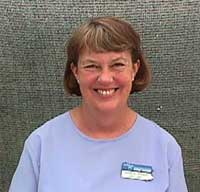Sue Williams
Adams County Master Gardener
 "The daffodil is our doorside queen, she pushes upward the sword already, to spot with sunshine the early green." An Invitation to the Country William Cullen
Bryant
"The daffodil is our doorside queen, she pushes upward the sword already, to spot with sunshine the early green." An Invitation to the Country William Cullen
Bryant
Pushing upward indeed. It’s March, and we have enjoyed a mild winter thus far with doses of sunshine and temperatures which are warming the soil. We see green daffodil and tulip shoots much earlier than usual. Thanks, Mother Nature! Just mention the
word daffodil and most of us picture sunny yellow flowers brightening a spring landscape in our yards and fields. Famous for the bright yellow cultivars like jonquils and the yellow trumpet, daffodils come in hundreds of colors that range from the paper-whites to peach,
gold, bold orange and pink.
Narcissus – Jonquil – Daffodil: You may have some confusion about just what to call these flowers because three terms are commonly used: narcissus, jonquil, and daffodil. Narcissus is the Latin or botanical name for all daffodils. Known as the
"poet’s flower," Narcissus is named after the mythological Grecian youth who was so captivated by his own beauty that he turned into a narcissus flower. The Narcissus family is divided into 12 divisions of 70 species based on size, shape, and growing height with over 25,000
cultivars. Jonquils are one class of Narcissus characterized by long narrow leaves, two or three flowers on a stem, and a sweet fragrance. The term daffodil is the common English name and generally refers to the common yellow trumpet flower surrounded by six petals on stems
14 to 20 inches tall.
Where to plant:Daffodils are one of the easiest flowers to grow and, once established, multiply each year and provide larger displays of color. These spring bulbs look beautiful planted in naturalized woodland settings, in formal beds, or mixed with
other bulbs and perennials. The beauty of daffodils is that they easily fit into landscapes, along a driveway or fence, under the base of a deciduous tree, or in forced bulb pots to welcome spring.
When and How to plant: If you haven’t already planted your daffodils, you will have to forego them in your yard this season. Bulbs require time to develop a root system before cold weather comes and the soil freezes. Daffodil bulbs should be planted
once the summer soil cools, from late September into late November in our area. Plant them with the pointed end up in full sun approximately 5 to 8" deep in well drained, loosely packed soil. The depth is determined by the bulb size; plant the larger bulbs deeper. If you
plant in clusters in the same hole, you should leave 2 to 6" between bulbs to allow for growing room.
Less is more when planting daffodils. Space them according to the package directions and resist the temptation to plant them too closely together. To help the development of the bulbs, you may want to use a special fertilizer. A slow release
fertilizer should be worked into the soil (about ¼ cup per square foot). Never place fertilizer directly in the bottom of the hole because it can kill emerging roots and promote rot. After planting in a location with good drainage, water the bulbs well. Moisture is
important since bulbs will not grow in dry conditions. For daffodils to make the most impact, plant dozens, hundreds, or even thousands of bulbs in a single planting.
After the bulbs bloom: One common mistake when growing daffodils is to cut back the foliage after the flowers finish blooming. After flowering, remove the faded flowers and the bloom stalks. Let the foliage turn yellow and die. (This usually takes
about 4 weeks). Fertilize after blooming is over to allow the foliage to collect both sunlight and moisture. During this time, the plant uses the nutrients from the foliage to produce the energy for blooms next year.
Dividing daffodils: After the bulbs have been in the ground for a number of years, you will probably find they are no longer blooming but still have lots of greenery. Daffodils are very long-lived, but most varieties need to be divided and replanted
when they become crowded. Divide the bulbs in late spring or early fall. Carefully dig around the clumps, handle the bulbs gently and brush off the excess soil. Discard the soft bulbs and replant only the hard firm ones. A mulch such as shredded bark, straw or ground corn
cobs is suitable.
Daffodil Group Show: The Tuscarora Daffodil Group meets in the spring and fall each year for daffodil bulb exchanges and show planning. This year the show dates are April 23 and 24 held at the First Lutheran Church in Chambersburg, PA. To learn more
about the free show and the group activities, please contact Richard Ezell, 334-2304.
Enjoy the daffodil displays in mid-March and April, give a bunch to a friend, or purchase a daffodil bouquet to support the American Cancer Society’s "Daffodil Week" Drive, March 14 to 20, 2005. Contact Jacqueline Lee, 334-7310 for the 10 direct sale
sites around the county the weekend of March 18 to 20.
And remember. . . "A house with daffodils in it is a house lit up, whether or no the sun be shining outside." A. A. Milne
Read other articles on plants and gardens
Read other gardening articles by Sue Williams